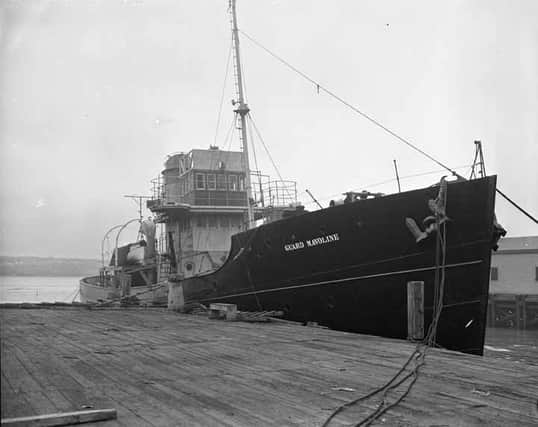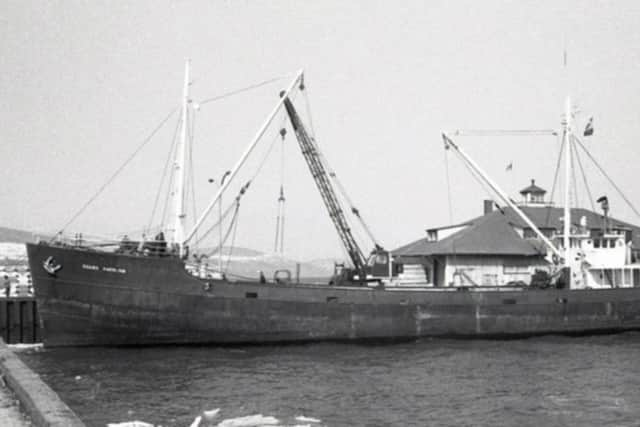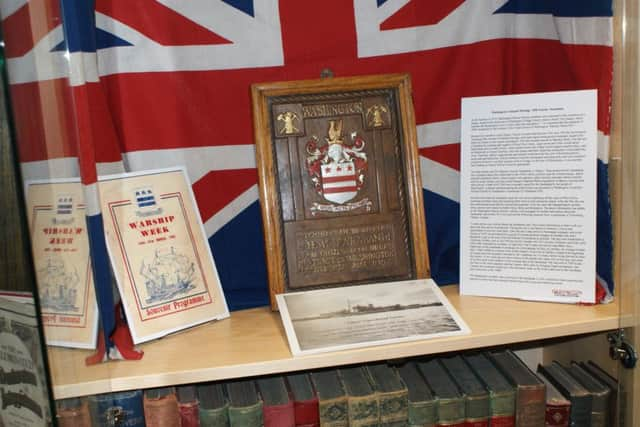Surprise Wearside discovery unearths tale of hardship and hope


Washington History Group launched the request for information in 2014 after a plaque marking the adoption of HMT Sarabande by townsfolk during World War Two was found following the closure of a local library.
“We wanted to piece together the history of the ship and, thanks to a fantastic response, we now have,” said member Ernie Guy. “It is an amazing story involving wartime air strikes, refugee rescues and lots of hard work around the globe.”


Advertisement
Hide AdAdvertisement
Hide AdThe early years of World War Two saw dozens of Royal Navy ships lost to enemy action. As pressure mounted to replace them, so the concept of National Savings was born.
Each region of the country was given a savings target to achieve between 1941 and 1942, with the aim of funding new vessels – from battleships and aircraft carriers to destroyers.
Once the money had been raised, individual communities were asked to adopt a ship – and its crew. The people of Washington volunteered to support armed trawler HMT Sarabande.
“Sarabande had been built in 1940 by A&J Inglis Ltd of Glasgow and was a Dance class vessel. She was used for mine-sweeping, patrol and anti-submarine duties,” said Ernie.


Advertisement
Hide AdAdvertisement
Hide Ad“Money was raised for her through Warship Week dances, concerts and whist drives. Children were asked to collect pots and pans to be sold for scrap and a total of £57,000 was eventually raised by the people of Washington.
“Churches, charities and schools also provided the crew with gloves, woollen socks and balaclavas, while school children were invited to write to the ship and crew members.
“A plaque was presented to Washington councillor William Haslett, by Sarabande’s commander GF Bradshaw, to mark the official adoption. This was the plaque which was later discovered in Washington Library.”
War records reveal Sarabande was fired on by an enemy plane off the West African coast in 1942, but survived to serve as an escort vessel between Lagos and Accra the following year.


Advertisement
Hide AdAdvertisement
Hide AdOnce war was over, however, she was decommissioned and sold to a Norwegian company. Then, in the spring of 1949, Sarabande was purchased by Latvian refugees in Sweden.
“We were contacted by one of the former refugees still living in Canada, who told us the Latvians were desperate to get as far away from the Russian Communists as possible,” said Ernie.
“Sarabande was refurbished in Gothenburg and, in July 1949, set sail for Canada with 254 Latvians, Estonians, Poles and other nationalities on board – all hoping to start new lives.
“After a difficult Atlantic crossing, the ship arrived in Halifax, Canada, at the beginning of August. The travellers were promptly interned for 10 weeks, before being allowed entry into Canada.”


Advertisement
Hide AdAdvertisement
Hide AdBut, although the refugees were now safe, the trip’s chief organiser – as well as Sarabande’s captain – were not. The pair were fined $400 each for bringing illegal immigrants into the country.
Sarabande had to be sold to pay the fines and, in 1950, she ended up at the Guard Salvage and Wrecking Company in Halifax, where she was renamed Guard Mavoline.
“The trawler was later rebuilt as a cargo coaster and had a long career on the Great Lakes and St Lawrence River. She was last heard of in 1973, when sold to Mexican owners,” said Ernie.
Although the Sarabande’s wartime links with Washington have long since disappeared, the adoption plaque is still treasured, and is now on display at Washington Library.
Advertisement
Hide AdAdvertisement
Hide Ad“The ship certainly had a long career, and I believe the Washington residents who contributed to her purchase would think that their money had been well spent!” said Ernie.
* Read more about Sarabande on Washington History Society’s website at www.washingtonhistorysociety.org.uk